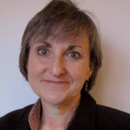Duplitecture

|
| This example of duplitecture is a copy of the main square Halstatt. It was built near Huizou, Guangdong Province. |
Contents |
[edit] Introduction
Duplitecture is a term that describes duplicated architecture, replicated architecture or copycat architecture. This form of architectural mimicry is primarily found in China.
[edit] History
Copycat buildings are not new in China. Its origins trace back to the first emperor of a unified China, Qin Shi Huang (259 BC - 210 BC), who is known for his terracotta army.
As a display of power and superiority, replica landmarks were made for imperial rulers to show off noteworthy places they defeated. These leaders would also replicate foreign gardens by importing plants and wildlife that would have been found in the conquered area.
In its modern iteration, duplitecture gained popularity during Shanghai's "One City, Nine Towns" plan. This government initiative, which was meant to ease overcrowding in Shanghai’s city centre, resulted in the creation of 10 duplitecture satellite cities based on the architectural styles of different European countries.
[edit] What defines duplitecture?
Duplitecture should not be confused with scaled down replicas found in places such as Las Vegas or Disney World’s Epcot theme park. Instead, its structures are commonly produced on (or close to) the same scale as the originals, although there may be some changes due to material availability or other matters. There may also be aesthetic changes, such as colour.
These buildings are primarily designed by Chinese architects. They are often meant to be entirely functional spaces. They may incorporate ideological adaptations, such as those associated with Feng shui, to enhance their habitability.
Some duplitecture projects replicate easily identifiable buildings. One example is the US White House - which is one of the most popular duplitecture structures in China.
Others reproduce large portions of identifiable European or American cities. These examples may be older cities, such as Venice (complete with canals) or Paris (with 12 square miles of housing along with a copy of the Eiffel Tower). Both of these duplitecture communities are located in the suburbs of Hangzhou.
Other duplitecture examples may be a patchwork collection of familiar architectural styles and iconic elements associated with specific countries. One instance is Thames Town in the outskirts of Shanghai - with its mock Tudor buildings, red telephone boxes, English pub, statues of Churchill, Shakespeare, James Bond and so on.
Instances of duplitecture can be found in the suburbs of several Chinese cities. While some critics take issue with their lack of authenticity, others acknowledge the craftsmanship of the reproductions.
Some of the communities include business-related incentives that support the authenticity of the reproduction. For example, a French bakery might be found in a Paris duplitecture community.
[edit] Decrease in duplitecture popularity
Many of the Chinese duplitecture projects built in the 2000s have lost their residential appeal. People have moved away from the novelty communities, leaving the cities largely abandoned. However, they are still relatively popular as tourist attractions and as backdrops to photoshoots - particularly for weddings.
[edit] Related articles on Designing Buildings
Featured articles and news
A change to adoptive architecture
Effects of global weather warming on architectural detailing, material choice and human interaction.
How big is the problem and what can we do to mitigate the effects?
Overheating guidance and tools for building designers
A number of cool guides to help with the heat.
The UK's Modern Industrial Strategy: A 10 year plan
Previous consultation criticism, current key elements and general support with some persisting reservations.
Building Safety Regulator reforms
New roles, new staff and a new fast track service pave the way for a single construction regulator.
Architectural Technologist CPDs and Communications
CIAT CPD… and how you can do it!
Cooling centres and cool spaces
Managing extreme heat in cities by directing the public to places for heat stress relief and water sources.
Winter gardens: A brief history and warm variations
Extending the season with glass in different forms and terms.
Restoring Great Yarmouth's Winter Gardens
Transforming one of the least sustainable constructions imaginable.
Construction Skills Mission Board launch sector drive
Newly formed government and industry collaboration set strategy for recruiting an additional 100,000 construction workers a year.
New Architects Code comes into effect in September 2025
ARB Architects Code of Conduct and Practice available with ongoing consultation regarding guidance.
Welsh Skills Body (Medr) launches ambitious plan
The new skills body brings together funding and regulation of tertiary education and research for the devolved nation.
Paul Gandy FCIOB announced as next CIOB President
Former Tilbury Douglas CEO takes helm.
UK Infrastructure: A 10 Year Strategy. In brief with reactions
With the National Infrastructure and Service Transformation Authority (NISTA).
Ebenezer Howard: inventor of the garden city. Book review.
Airtightness Topic Guide BSRIA TG 27/2025
Explaining the basics of airtightness, what it is, why it's important, when it's required and how it's carried out.






















